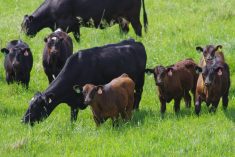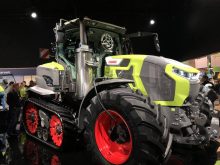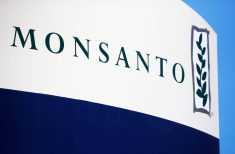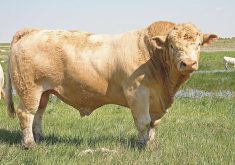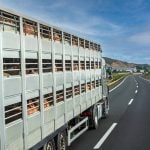Though Don Mackenzie can’t remember a time without cattle, he has dispersed his purebred Red Angus herd. But he won’t have to go far to stay involved with daughter Jade taking a run at a third generation on the ranch nestled on the flat prairie in full view of Chief Mountain and the majestic Rockies stretching north as far as the eye can see.
That heritage, and a willingness to be involved in many aspects of the cattle industry, is how he landed the job of chairman of the Canadian Beef Breeds Council, a post he will relinquish after the council annual meeting in February.
Read Also

Grazing ‘sweet spot’ boosts pasture performance
Timing-focused approach to pasture management touted to boost forage growth, livestock gains while also cutting farmer labour and inputs
Mackenzie has earned his stripes in the purebred beef industry and the family has deep roots in the cattle and ranch business. In fact, it was the Yukon gold rush of 1897 that spurred some Mackenzies from their California roots. They arrived in Bonners Ferry, Idaho when word got out that the rush was a bust.
“The real plan of a purebred breeder was to always raise animals every year.”
Mackenzie credits the availability of homesteading land in the Mountain View-Cardston area for the family’s decision to head north and east. They homesteaded in 1898.
His father Roderick arrived in August 1898 in Cardston and started accumulating land. At times, the family made more money chasing coyotes with packs of dogs than selling cattle. Five of the Mackenzie’s brothers and one sister stayed in agriculture, recognizing the true pioneering spirit their father lived by. Initially, the farm ran more sheep than cattle. But that was the era of massive flocks in many parts of southern Alberta. Eventually cattle took over the ranch and the brothers eventually split up to go on their own.
STUCK WITH RED
Shorthorns, at one time a popular breed in Alberta, were the first choice. But then the family decided a change was needed. They wanted to retain the basic red colour to produce reds and roans while injecting Angus traits. Black Angus was never contemplated.
“It took quite a while to gain acceptance with Red Angus,” says Mackenzie. “One problem was the timing of bringing the breed to Canada. We brought a bull, two bred heifers and one cow from Beckton Stock Farm in Sheraton, Wyoming.”
The brothers were the first to bring Red Angus to Canada. Mackenzie said the Red Angus were brought to southern Alberta in 1962, about the time exotic imported cattle breeds were gaining the spotlight. “Momentum was building,” Mackenzie says.
At a production sale in the early 1980s he sold a 5 1/2-month Red Angus bull calf for $21,250. “She won’t get much better than that,” was the thought of the day. A syndicate purchased the animal, and Mackenzie still maintains a small quantity of semen from the bull. He maintains a reservoir of banked semen from many of his older bulls.
The industry has changed in his time, Mackenzie said. When he first got in, all Red Angus breeders acted like a family in each region. But over time all producers started competing against fellow breeders. With more breeders and more cattle, the genetic pool for breeds is bigger and there is a constant search by all producers to find ways to improve the genetic pool.
“The real plan of a purebred breeder was to always raise animals every year,” he Mackenzie says that was considered a way to bring in more money.
For instance, many breeders when seeking a new herd bull would look across the fence to buy from different producers. Often, those sellers would buy back genetics. Artificial insemination brought significant change to the purebred industry because it allowed introduction of a much wider spectrum of genetics. It also helped marketing. About 80 per cent of Mackenzie’s annual sales was to repeat customers. “They could get the benefit of our genetic improvements,” he says.
CANADIAN REPUTATION STRONG
The Canadian Beef Breeds Council is a major player in the purebred industry, says Mackenzie. The council focuses its policies and programs on priorities established by industry.
Mackenzie says Canada’s reputation as a source of productive and safe beef cattle genetics is unmatched in the world. A clean environment through careful stewardship, healthy livestock supported by a national animal health and food safety policy, provincial programs, and careful record-keeping and accurate genetic improvement programs all play a role.
Mackenzie says one major international event he’s enjoyed is the World Angus Forum, held every four years. When he was president of the Canadian Angus Association in 2001, the forum was in Copenhagen. Mackenzie asked that Canada be allowed to host the event in July 2009 at Spruce Meadows near Calgary.
More than 900 delegates from 26 countries registered. More than 1,000 red and black Angus cattle were on display with 280 exhibitors for two days of shows. Mackenzie says organizers estimate there was more than $1 million of direct sales realized for sales of cattle, semen and embryos.
It was another testimony for Mackenzie that the quality of cattle in Canada is the best in the world. “And I’m not bragging,” he said. To prove its status, the organizers invited Angus breeders from around the world to send embryos. Those offspring were two years old during the forum, allowing them to be compared to Canadian Angus.
“Those nations appreciated our forum’s willingness to entertain their genetics,” says Mackenzie. “Likely, there would have been some buyers of that genetics from that show.”
Still, Mackenzie said a major job for the council is to find ways to gain a uniform animal health chart in all countries. That will help it fills its second mandate – develop and fill foreign markets with Canadian Angus genetics.



